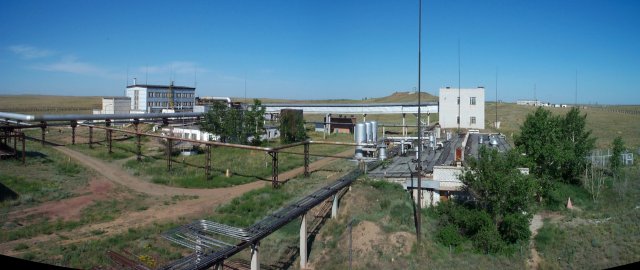IGR Reactor
One of the oldest research reactors in the world, IGR reactor is a unique source of neutron and gamma radiation characterized by a high dynamics of power change.

Intense development of reactor engineering in 50-s of the 20th century predetermined creation of pulse reactor for experimental research of non-stationary physical processes occurring in the core when high reactivity is imparted.
IGR reactor history is started with CPSU Central Committee's and USSR Soviet of Ministers' Decree #518-246 of May 13, 1958. Under this Decree it was envisaged "...to build an experimental facility with high temperature homogeneous graphite reactor at site #905 (Semipalatinsk Test Site) of the Ministry of Defense".
IGR reactor was built in the shortest time possible and allowed to start experimental study of pulse reactor dynamics in 1961. In 1962 the studies of fuel and structure materials behavior in advanced reactor facilities including NJP (nuclear jet propulsion) began.
Technical Parameters
| Neutron flux maximum density | 7×1016 n/cm2s |
| Thermal neutron maximum fluence | 3,7×1016 n/cm2 |
| Minimum half-width of impulse | 0,12 s |
IGR research reactor is a pulse reactor on thermal neutrons with homogeneous uranium-graphite core of thermal capacity type. Graphite high thermal capacity enabled to do without the system of forced removal of heat released in the core during the reactor operation. Absence of standard coolant circuit considerably reduces the risk of radiation accident at the reactor.
IGR reactor nuclear safety is specified by a considerable level of negative reactivity coefficient that provides guaranteed shutdown of any physically possible power impulse, initiated by positive reactivity insertion through CPS (control and protection system) rods removal.
Among pulse reactors, IGR reactor has the highest fluency of thermal neutrons and integral gamma radiation dose in the experimental cavity of 228 mm in diameter and 3825 mm high.